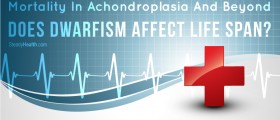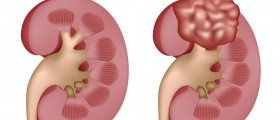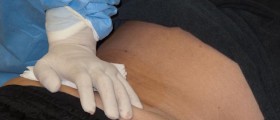
Dwarfism is the term used for short stature caused by certain medical conditions some of which are genetic. The height of such individuals is 4 feet 10 inches (147 cm) or even less.
Depending on the cause of dwarfism, some people may be treated and eventually reach certain height while others stay short but in them treatment may be necessary for associated health issues.
The major problem regarding dwarfism is prejudice many people cherish toward short individuals. These people are supposed to be considered equal on all terms and deserve as respect as any other living being. The height may sometimes interfere in their productivity but with family support, social networks, advocacy groups and adaptive products every obstacle is defeated.
Symptoms of Dwarfism
It is estimated that more than 200 condition are actually associated with dwarfism. So, when we discuss symptoms of dwarfism we have to take into consideration all symptoms that represent each and every condition characterized by dwarfism among other characteristics.
So, in order to be more precise and alleviate differentiation process, experts have divided dwarfism into disproportionate dwarfism and proportionate dwarfism.
Patients with disproportionate dwarfism, as the name suggests, have some parts of the body small, while others reach the expected size or even above-average size. Proportionate dwarfism, on the other hand, occurs when the entire body is small, but body parts remain proportional to each other.
Disproportionate Dwarfism Characteristics
In this case there is usually an average-size trunk and very short limbs. In some individuals even the trunk may be short. Also, the head of people with disproportionate dwarfism appears larger comparing to the rest of the body. So, different body parts are usually smaller that the rest of the body and this is the reason of disproportion.
The intellectual capabilities are intact unless they develop as a result of hydrocephalus. Around 70% of people with disproportionate dwarfism are actually suffering from achondroplasia. Mortality in people affected by achondroplasia is very close to people who aren't affected by dwarfism. Additionally, the most commonly reported disproportionate dwarfism characterized by a short trunk is spondyloepiphyseal dysplasia.
Proportionate Dwarfism Characteristics
Proportionate dwarfism occurs at birth and during early childhood. The condition affects the overall growth and development resulting in a reduction in size of each and every part of the body. So all body parts are proportionate but quite smaller then they are supposed to be.
Because the entire body is affected, patients usually have additional problems with many body systems and may have mental retardation.
The most common cause of proportionate dwarfism is lack of growth hormone. However, there are plenty more conditions associated with proportionate dwarfism with Turner syndrome being only one of them.

















Your thoughts on this
Loading...